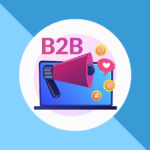With the phasing out of third-party data collection, businesses are turning to first-party data to gain insights into their customers’ behavior and preferences. In this post, we’ve compiled a list of different methods for collecting first-party data to make sure you don’t have any large disruptions.
We’ve also highlighted the benefits and potential drawbacks of each method and provided tips for implementation. Whether you’re a small business owner or a marketing professional, this blog post will help you understand how to effectively collect first-party data and use it to improve your business’s bottom line. Additionally, if you need help with implementing these data collection methodologies, Ontario SEO is here to assist you every step of the way.
So, let’s dive into the world of first-party data collection and how it can benefit your business!
First-Party Data Collection Methods for Websites
There are many ways to collect first-party data from your users. We’ve compiled an extensive list of first-party data collection methodologies that may be useful. Choosing a data collection methodology will depend on your website, your technical capabilities and your business goals for the data you collect.
- Data Collection Forms
- Progressive Profiling
- Event-Based Tracking
- Single Sign-On
- Content Sharing
- Surveys or Polls
- Warranty or Product Registration
- Customer Feedback and Reviews
- Interactive Content
- Selective Content Locking
Data Collection Forms
Offering services for information is one of the simplest ways to gather first-party information from website visitors. Using a pop-up on landing pages, blogs, or product pages, and asking users to sign up for exclusive deals is a great way to encourage the sharing of first-party information with your business.
Pop-ups can have negative SEO consequences, so they need to be deployed thoughtfully without impacting user experience.
Requiring a user to sign into checkout can be a simple way to collect first-party information during the checkout process.

Progressive Profiling
This method initially asks for the bare minimum amount of information to create the account. Upon repeated logins, additional information will be requested each time to slowly fill out the user profile. Providing a progress tracker visible to the user can also help incentivize them to completely fill out the profile. This method is used more commonly in B2B sales and offerings.

Event-Based Tracking
Use event-based tracking to gather user attributes, collect behavioural data, and metadata. Using this method, you can gather data on event properties and event–associated properties (such as not only that a field was filled, but what data was entered into the field). Here are a few options for tools to track event-based user attributes:
- Segment: https://segment.com
- Segmentstream: https://segmentstream.com
- Heap: https://heap.io
- Mparticle: https://mparticle.com
Single Sign-On
This method involves asking users to sign into their Google or Facebook accounts to sign in faster. This will provide users with an on-click login while also providing the website information on the user’s name, ID, profile, interests, and location.
Surveys or Polls
Collecting data from responses to surveys or polls is a great way to gain insight into consumer behaviour. Offering a small discount or gift is a good way to incentivize users to participate in surveys.
Warranty or Product Registration
Collect information from users who enter warranty or product registrations. Additionally, including QR stickers on products will allow for quick access to this page by users.
Customer Feedback and Reviews
Asking for reviews via email, social, or directly on your website is a great way to get additional information from your users. If it is possible to link the reviews directly to the customer profile, it would also help to establish a more complete customer file.
Interactive Content
Interactive content is anything like a quiz, calculator, challenges, puzzles, etc. This content interaction gives opportunities for firs-party data collection and more opportunities to build out user profiles.
Selective Content Locking
Locking content behind sign-ups and account creation entices users to sign-up and provides first-party data. There are some downsides for SEO with this option that site-owners should be aware of.
First-Party Data Collection and You
To successfully implement first-party data collection, businesses should begin by knowing what data they need and why. It’s crucial to understand what data you need so it can be outlined in your privacy policy, so you are above-board with all your data collection. It is not only illegal to not disclose what data you are collecting, but it is also a good way to lose the trust and engagement of your prospects. Building a measurement framework that provides you with a simple way to measure the success of the metrics you are collecting is also important in the setup phase as you want a guideline in place as early as possible.
The data collection methods listed above can be implemented by either a developer or through a third-party plugin. Either way, after implementation you will have an excellent form for data collection.
Need a Hand?
Ontario SEO can help you identify a data collection method that is most appropriate for your business advertising goals and your existing website, and then help you with the implementation of a measurement framework. Our website analytics team will work with you to monitor and test your collection methodologies and make suggestions to improve user experience and minimize barriers to conversion, so any transition to first-party data is as smooth as possible for your business.








